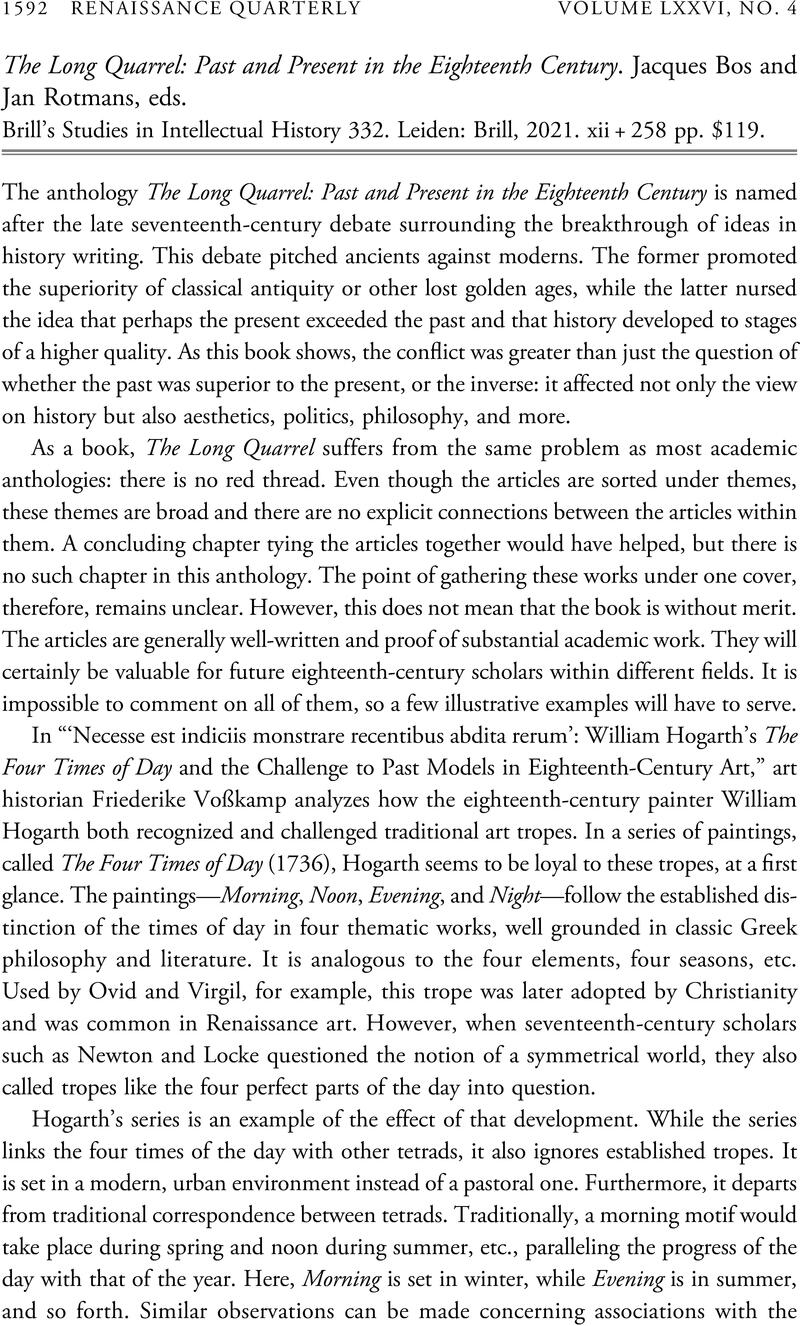No CrossRef data available.
Article contents
The Long Quarrel: Past and Present in the Eighteenth Century. Jacques Bos and Jan Rotmans, eds. Brill's Studies in Intellectual History 332. Leiden: Brill, 2021. xii + 258 pp. $119.
Review products
The Long Quarrel: Past and Present in the Eighteenth Century. Jacques Bos and Jan Rotmans, eds. Brill's Studies in Intellectual History 332. Leiden: Brill, 2021. xii + 258 pp. $119.
Published online by Cambridge University Press: 24 January 2024
Abstract
An abstract is not available for this content so a preview has been provided. Please use the Get access link above for information on how to access this content.

- Type
- Review
- Information
- Copyright
- Copyright © The Author(s), 2024. Published by Cambridge University Press on behalf of the Renaissance Society of America



